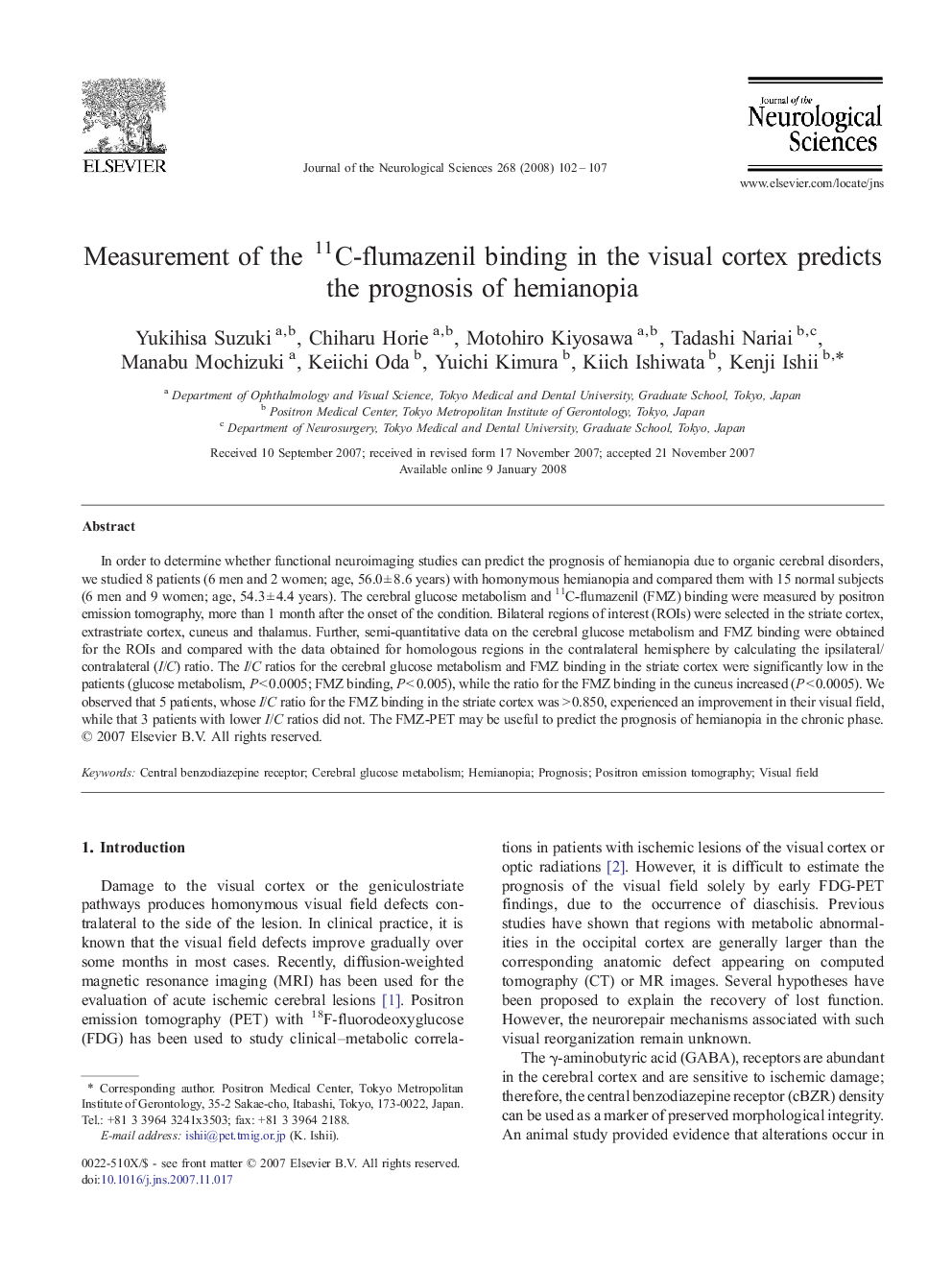| Article ID | Journal | Published Year | Pages | File Type |
|---|---|---|---|---|
| 1915750 | Journal of the Neurological Sciences | 2008 | 6 Pages |
Abstract
In order to determine whether functional neuroimaging studies can predict the prognosis of hemianopia due to organic cerebral disorders, we studied 8 patients (6 men and 2 women; age, 56.0 ± 8.6 years) with homonymous hemianopia and compared them with 15 normal subjects (6 men and 9 women; age, 54.3 ± 4.4 years). The cerebral glucose metabolism and 11C-flumazenil (FMZ) binding were measured by positron emission tomography, more than 1 month after the onset of the condition. Bilateral regions of interest (ROIs) were selected in the striate cortex, extrastriate cortex, cuneus and thalamus. Further, semi-quantitative data on the cerebral glucose metabolism and FMZ binding were obtained for the ROIs and compared with the data obtained for homologous regions in the contralateral hemisphere by calculating the ipsilateral/contralateral (I/C) ratio. The I/C ratios for the cerebral glucose metabolism and FMZ binding in the striate cortex were significantly low in the patients (glucose metabolism, P < 0.0005; FMZ binding, P < 0.005), while the ratio for the FMZ binding in the cuneus increased (P < 0.0005). We observed that 5 patients, whose I/C ratio for the FMZ binding in the striate cortex was > 0.850, experienced an improvement in their visual field, while that 3 patients with lower I/C ratios did not. The FMZ-PET may be useful to predict the prognosis of hemianopia in the chronic phase.
Keywords
Related Topics
Life Sciences
Biochemistry, Genetics and Molecular Biology
Ageing
Authors
Yukihisa Suzuki, Chiharu Horie, Motohiro Kiyosawa, Tadashi Nariai, Manabu Mochizuki, Keiichi Oda, Yuichi Kimura, Kiich Ishiwata, Kenji Ishii,
